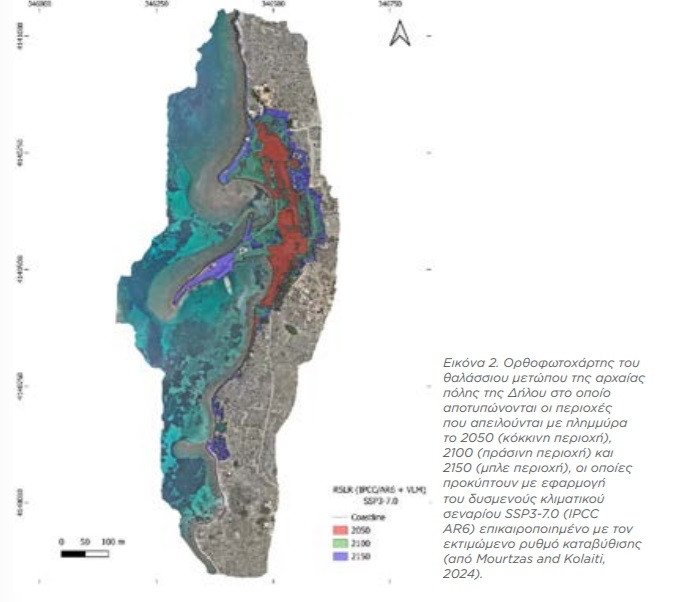Changes to the coastal landscape due to future sea-level rise will be dramatic – According to researchers, “threatened areas are 18.5 hectares by 2050
“The changes which will come to coastal landscape of Delos because of the future level rise of the sea will be dramatic“, warns Dr Geologias and deputy member of the Central Archaeological Council, Nikos Mourtzasanalyzing the findings of his joint research with Dr. GeoarchaeologyEleni Kolaiti, for the Journal of Marine Science and Engineering.
Speaking in the “Notebooks of Culture”, Nikos Mourtzas explains with data, images and photos published in the third issue of the scientific magazine, that in Delos – based on the most unfavorable scenario – the “threatened lands are 18.5 acres by 2050, 41.5 hectares by 2100 and 54.5 hectares by 2150, while the coastline is estimated to shift inland by 220 m by 2150.” The researcher even points out that “the analysis of all the data shows, without a doubt, that the planning and implementation of measures to protect the sea front of the ancient city of Delos and the adoption of adaptation solutions to the effects of the future relative rise of the sea level, are more imperative”.
On her part, Eleni Kolaiti notes that the most vulnerable part of Delos “is the one that also bears the greatest archaeological load, namely the sea front of the ancient city of Delos”.
The researcher points out that the ever-accelerating increase in the rate of relative sea level rise, as one of the main effects of climate change, “is mainly attributed to global warming, as a result of the increase in atmospheric concentrations of greenhouse gases, caused by from super-intensive human activities”.
Eleni Kolaiti, emphasizes that “Greece’s intense insularity and its significantly long coastline, which ranks it eleventh in the world ranking, makes it one of the Mediterranean countries that will be significantly burdened by the future rise in sea level, affecting dramatically the social, economic, cultural and touristic infrastructures in the systematically exploited coastal zone, with large areas of it being flooded by the sea”.
Source :Skai
I am Frederick Tuttle, who works in 247 News Agency as an author and mostly cover entertainment news. I have worked in this industry for 10 years and have gained a lot of experience. I am a very hard worker and always strive to get the best out of my work. I am also very passionate about my work and always try to keep up with the latest news and trends.











